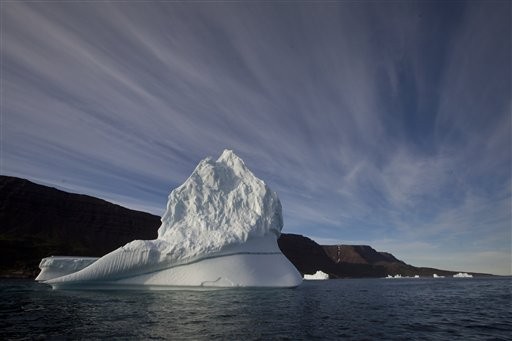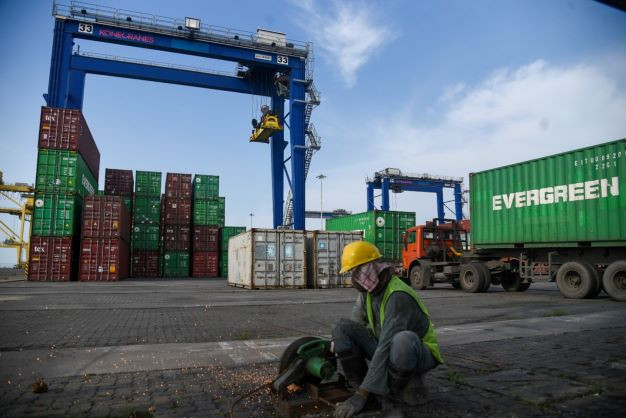Scientists: Greenland ice sheet is melting freakishly early
Change Size
 In this July 21, 2011 file photo, an iceberg floats in the sea near Qeqertarsuaq, Disko Island, Greenland. Global warming is shifting the way the Earth wobbles on its polar axis, a new NASA study finds. Melting ice sheets, especially in Greenland, are changing the distribution of weight on Earth. And that has caused both the North Pole and the wobble, which is called polar motion, to change course, according to a study published on April 8, 2016, in the journal Science Advances. (AP/Brenna Linsley)
In this July 21, 2011 file photo, an iceberg floats in the sea near Qeqertarsuaq, Disko Island, Greenland. Global warming is shifting the way the Earth wobbles on its polar axis, a new NASA study finds. Melting ice sheets, especially in Greenland, are changing the distribution of weight on Earth. And that has caused both the North Pole and the wobble, which is called polar motion, to change course, according to a study published on April 8, 2016, in the journal Science Advances. (AP/Brenna Linsley)
G
reenland's massive ice sheet this week started melting freakishly early because of a weather system that brought unseasonably warm temperatures and rain, scientists say.
While the record early melt is mostly from natural weather on top of overall global warming, scientists say they are concerned about what it will mean when the melt season begins this summer. This early melt, however, could be temporary.
On Monday and Tuesday, about 12 percent of the ice sheet surface area — 656,000 square miles, or 1.7 million square kilometers — showed signs of melting ice, according to Peter Langen, a climate scientist at the Danish Meteorological Institute.
That smashed the record for early melting by more than three weeks. Such a melt is normal for late May, not mid-April, Langen said.
Normally, no ice should be melting in Greenland at this time of year. Before now, the earliest Greenland had more than 10 percent surface area melting was on May 5, back in 1990. Even in 2012, when 97 percent of Greenland experienced melt, it didn't have such an early and extensive melt.
Langen said the amount of melt is not the issue. The timing is: "It's nothing for July, it's huge for April."
He called it disturbing. "Something like this wipes out all kinds of records, you can't help but go, 'This could be a sign of things we're going to see more often in the future.'"
Langen said the measurements are based on scores of observations from monitors on the ice fed into a computer simulation.
A weather system is bringing warm temperatures to Greenland and funneling lots of warmer-than-normal rain up from the south, Langen said.
Greenland's capital, Nuuk, reached 62 degrees (16.6 degrees Celsius) on Monday, smashing the April record high temperature by 6.5 degrees. Inland at Kangerlussuaq, it was 64 degrees (17.8 degrees Celsius), warmer than St. Louis and San Francisco.
Langen and other scientists said this is part of a natural weather system, but man-made climate change has worsened it.
"Things are getting more extreme and they're getting more common," said NASA ice scientist Walt Meier.
Greenland ice sheet melting is one of the more visible and key signs of man-made global warming from the burning of fossil fuels because it is causing seas to rise, putting coastal areas at risk, Meier said.
If the entire Greenland ice sheet melted, which would take centuries, it could add 20 feet (6 meters) or more to the global sea level, Meier said. But within the next century, Greenland ice melt alone could raise it by a couple feet, he said.
"The concern is things are moving faster than we thought," Meier said.









